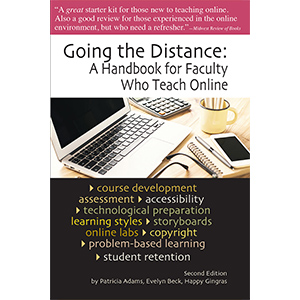The Perils of Online Texts
by Kelly O’Connor-Salomon
I have one online seminar class that I have been teaching for a long time. Up until recently, I have been able to design the course myself, choosing the theme and the texts. However, the school decided they wanted to make this class, like many of their others, completely pre-packaged. Fortunately, I was asked to be the faculty consultant for this course, so I thought about texts and looked for books that would be scholarly and give the students as much assistance as possible in the form of thorough introductions and notes. Literature classes can be tough online as it is, but that is another topic. Imagine my dismay when I did a recent session of this class and found my carefully chosen texts replaced with online, freely accessed versions of the texts.
Free is better, right? Not necessarily, and not for English majors in an upper-level course who will be going on to teach or graduate school, or both. While I myself have referred students to a short story or a poem that is posted online, that is different from reading a whole novel that way. A story or poem can, ideally, be printed, and notes and commentary placed in the margins of the page. In fact, students may be more likely to mark up a text in this format than one in a book. However, I doubt anyone would print an entire novel; that would likely be more expensive than just buying a copy at the bookstore. And active reading, annotating, and commenting are really limited when one is reading on a screen. Even note taking on an e-reader is a little clunky.
But that’s only part of the problem. Another is that online books are often outdated–they are free and available to everyone for a reason. Formats and documentation styles change. If we want our students to use current MLA format, then we need to reflect that in the texts we choose, and not have them read a Shakespeare play that still uses Roman numerals for acts and scenes, for example. Especially online, where students are expected to work more independently, we need to give them the right tools. Otherwise, they will run into trouble further down the line, and they will blame us.
Lastly, many online texts are just that–the text. Ancillary materials are often left out, and if they are included, they could suffer from being outdated as well. Even though many students don’t read introductions or notes, they still need access to them, to have it reinforced that they have value. Especially with a challenging text, and most students find anything older than 1995 challenging, introductions and appendices can be the one thing that helps a student get through it.
Online versions of book-length texts fill a need, and when I am trying to place a random reference from Hamlet, I am glad they are there. But I am not going to quote that version of the play in a paper. The next generation of teachers and scholars needs to learn how to distinguish between different editions as well, and bound books are still going to be the best for this.









